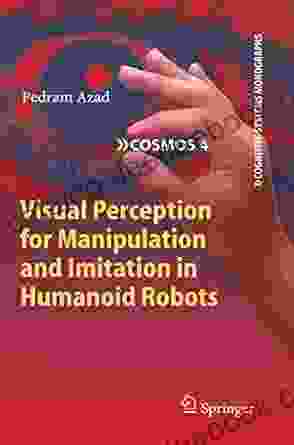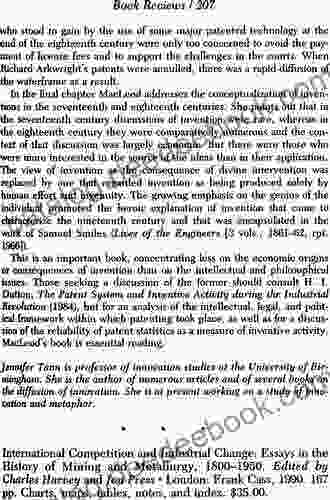Visual Perception for Manipulation and Imitation in Humanoid Robots

Visual perception is a critical sense for humans and animals, allowing us to navigate our environment, interact with objects, and communicate with others. In recent years, there has been growing interest in developing visual perception systems for humanoid robots. These systems would enable robots to perform a wide range of tasks, such as manipulating objects, imitating human actions, and navigating complex environments.
However, developing visual perception systems for robots is a challenging task. One of the main challenges is the fact that robots must be able to perceive the world in a way that is similar to humans. This means that they must be able to recognize objects, understand their relationships to each other, and interpret the actions of other agents.
Another challenge is the fact that robots must be able to operate in real-time. This means that they must be able to process visual information quickly and efficiently in order to make decisions and take actions.
5 out of 5
| Language | : | English |
| File size | : | 5662 KB |
| Text-to-Speech | : | Enabled |
| Print length | : | 285 pages |
| Screen Reader | : | Supported |
Despite these challenges, there has been significant progress in the development of visual perception systems for humanoid robots in recent years. This article provides a comprehensive overview of the different types of visual perception, the challenges involved in developing visual perception systems for robots, and the latest research in this area.
There are a number of different types of visual perception that are important for humanoid robots. These include:
- Object recognition: The ability to recognize objects in the environment.
- Scene understanding: The ability to understand the relationships between objects in the environment.
- Action recognition: The ability to recognize the actions of other agents.
- Depth perception: The ability to perceive the distance to objects in the environment.
- Motion perception: The ability to perceive the movement of objects in the environment.
Each of these types of visual perception is important for different tasks. For example, object recognition is essential for manipulation tasks, while scene understanding is important for navigation tasks.
There are a number of challenges involved in developing visual perception systems for robots. These include:
- The complexity of the visual world: The visual world is a complex and dynamic environment, and robots must be able to perceive it in a way that is similar to humans.
- The need for real-time processing: Robots must be able to process visual information quickly and efficiently in order to make decisions and take actions.
- The variability of the environment: Robots must be able to operate in a variety of different environments, each with its own unique challenges.
There is a great deal of ongoing research in the area of visual perception for robots. Some of the most promising research areas include:
- Deep learning: Deep learning is a type of machine learning that has been shown to be very effective for a variety of visual perception tasks.
- Computer vision: Computer vision is a field of computer science that deals with the understanding of images and videos. Computer vision techniques can be used to develop visual perception systems for robots.
- Neuromorphic computing: Neuromorphic computing is a type of computing that is inspired by the human brain. Neuromorphic computing chips can be used to develop more efficient and powerful visual perception systems for robots.
Visual perception is a critical sense for humanoid robots. It enables them to perform a wide range of tasks, such as manipulating objects, imitating human actions, and navigating complex environments. However, developing visual perception systems for robots is a challenging task. There are a number of challenges that must be overcome, including the complexity of the visual world, the need for real-time processing, and the variability of the environment.
Despite these challenges, there has been significant progress in the development of visual perception systems for humanoid robots in recent years. This progress has been driven by advances in deep learning, computer vision, and neuromorphic computing. As these technologies continue to develop, we can expect to see even more powerful and efficient visual perception systems for robots in the future.
5 out of 5
| Language | : | English |
| File size | : | 5662 KB |
| Text-to-Speech | : | Enabled |
| Print length | : | 285 pages |
| Screen Reader | : | Supported |
Do you want to contribute by writing guest posts on this blog?
Please contact us and send us a resume of previous articles that you have written.
 Book
Book Chapter
Chapter Text
Text Reader
Reader Library
Library Magazine
Magazine Paragraph
Paragraph Sentence
Sentence Bookmark
Bookmark Glossary
Glossary Bibliography
Bibliography Foreword
Foreword Synopsis
Synopsis Footnote
Footnote Classics
Classics Library card
Library card Narrative
Narrative Autobiography
Autobiography Memoir
Memoir Reference
Reference Encyclopedia
Encyclopedia Dictionary
Dictionary Thesaurus
Thesaurus Character
Character Resolution
Resolution Catalog
Catalog Card Catalog
Card Catalog Borrowing
Borrowing Archives
Archives Periodicals
Periodicals Research
Research Academic
Academic Interlibrary
Interlibrary Study Group
Study Group Thesis
Thesis Dissertation
Dissertation Storytelling
Storytelling Awards
Awards Book Club
Book Club Theory
Theory Christina E Forshay
Christina E Forshay Rob Steen
Rob Steen Lauren M Bloom
Lauren M Bloom Lynn Fujiwara
Lynn Fujiwara Benjamin Weingarten
Benjamin Weingarten Theodore H White
Theodore H White Kadeija Bond
Kadeija Bond Course Hero
Course Hero Eileen Sisk
Eileen Sisk R J Palacio
R J Palacio Susan M Walcott
Susan M Walcott Larry Colton
Larry Colton Kim Fu
Kim Fu Cc Beechum
Cc Beechum Pauline Shanks Kaurin
Pauline Shanks Kaurin Alan Geiss
Alan Geiss Patricia Joan Saunders
Patricia Joan Saunders Al Cimino
Al Cimino Courtney Walsh
Courtney Walsh Ceferino Reato
Ceferino Reato
Light bulbAdvertise smarter! Our strategic ad space ensures maximum exposure. Reserve your spot today!

 Hayden MitchellNew Ks2 Maths Targeted Study Year: Unlock Your Child's Mathematical Potential
Hayden MitchellNew Ks2 Maths Targeted Study Year: Unlock Your Child's Mathematical Potential
 Johnny TurnerBe Free Where You Are: A Guide to Finding Happiness and Fulfillment in the...
Johnny TurnerBe Free Where You Are: A Guide to Finding Happiness and Fulfillment in the... Josh CarterFollow ·5.2k
Josh CarterFollow ·5.2k Kazuo IshiguroFollow ·5.7k
Kazuo IshiguroFollow ·5.7k Felix HayesFollow ·11.1k
Felix HayesFollow ·11.1k Henry JamesFollow ·2.1k
Henry JamesFollow ·2.1k Bret MitchellFollow ·5.9k
Bret MitchellFollow ·5.9k Houston PowellFollow ·13.1k
Houston PowellFollow ·13.1k Adrien BlairFollow ·6.1k
Adrien BlairFollow ·6.1k Hassan CoxFollow ·18.4k
Hassan CoxFollow ·18.4k

 Hayden Mitchell
Hayden MitchellThe Routledge Handbook of Feminist Peace Research: A...
The Routledge...

 Joe Simmons
Joe SimmonsUnveiling the Lyrical Mastery of Henri Cole's "Blizzard...
In the realm of...

 E.E. Cummings
E.E. CummingsEast End Hardman To Tv Star: The Unlikely Rise Of Danny...
Danny Dyer is one of the...

 Eli Brooks
Eli BrooksMusic in the Tradition of Thich Nhat Hanh: A Journey of...
In the heart of...

 Samuel Ward
Samuel WardAmazing Scenes in Plastic Canvas: Bringing Your...
Plastic canvas is a...

 E.E. Cummings
E.E. CummingsA Comprehensive Guide to Non-Jazz Improvisation for...
: Embracing the Art of...
5 out of 5
| Language | : | English |
| File size | : | 5662 KB |
| Text-to-Speech | : | Enabled |
| Print length | : | 285 pages |
| Screen Reader | : | Supported |








